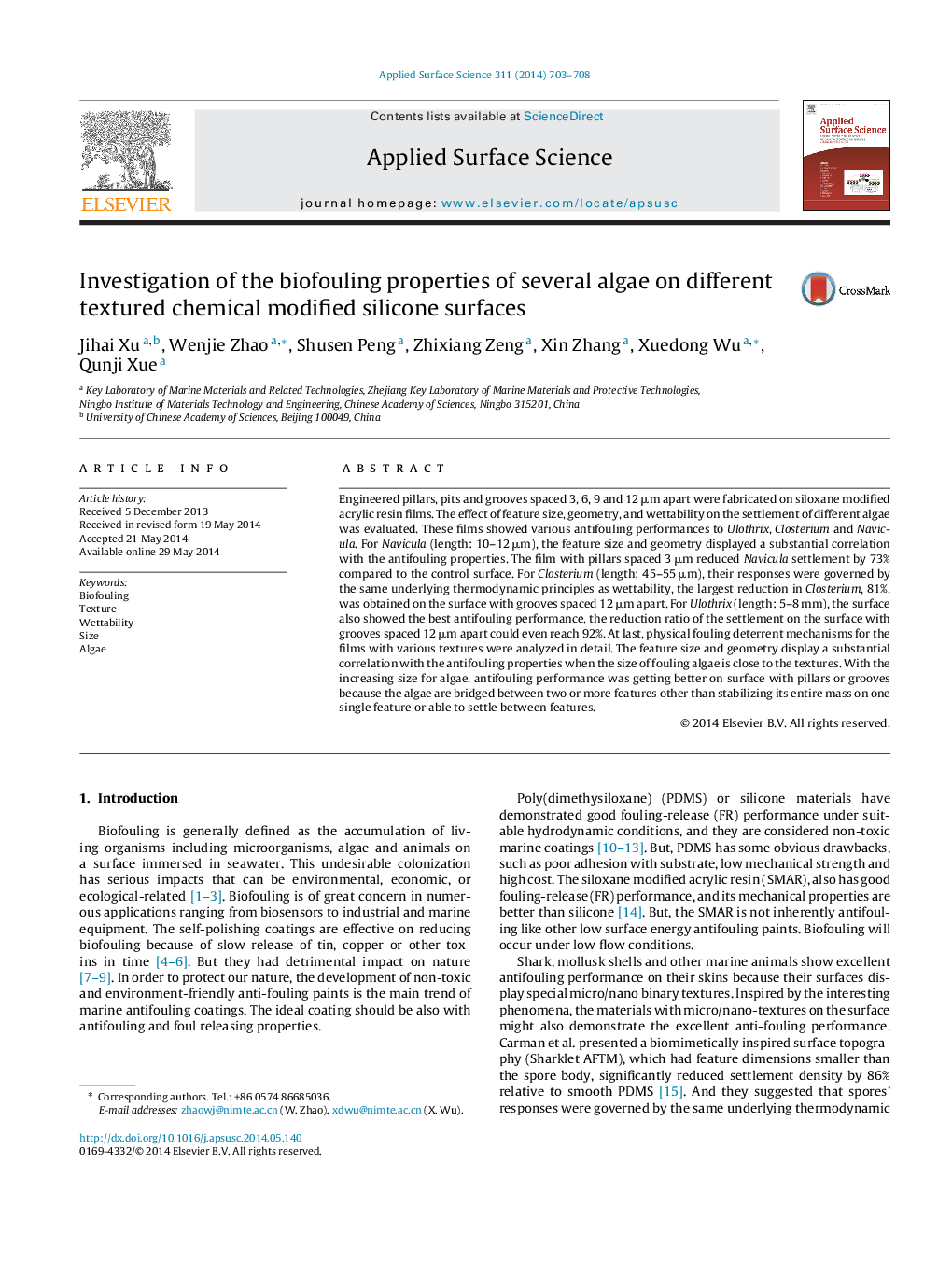| کد مقاله | کد نشریه | سال انتشار | مقاله انگلیسی | نسخه تمام متن |
|---|---|---|---|---|
| 5361408 | 1503653 | 2014 | 6 صفحه PDF | دانلود رایگان |
- Engineered pillars, pits and grooves spaced 3-12 μm apart were fabricated on siloxane modified acrylic resin films.
- The effect of feature size, geometry, and wettability on the settlement of different algae was evaluated.
- The feature size and geometry displayed a substantial correlation with the antifouling properties.
- A comparatively physical fouling deterrent mechanism was analyzed.
Engineered pillars, pits and grooves spaced 3, 6, 9 and 12 μm apart were fabricated on siloxane modified acrylic resin films. The effect of feature size, geometry, and wettability on the settlement of different algae was evaluated. These films showed various antifouling performances to Ulothrix, Closterium and Navicula. For Navicula (length: 10-12 μm), the feature size and geometry displayed a substantial correlation with the antifouling properties. The film with pillars spaced 3 μm reduced Navicula settlement by 73% compared to the control surface. For Closterium (length: 45-55 μm), their responses were governed by the same underlying thermodynamic principles as wettability, the largest reduction in Closterium, 81%, was obtained on the surface with grooves spaced 12 μm apart. For Ulothrix (length: 5-8 mm), the surface also showed the best antifouling performance, the reduction ratio of the settlement on the surface with grooves spaced 12 μm apart could even reach 92%. At last, physical fouling deterrent mechanisms for the films with various textures were analyzed in detail. The feature size and geometry display a substantial correlation with the antifouling properties when the size of fouling algae is close to the textures. With the increasing size for algae, antifouling performance was getting better on surface with pillars or grooves because the algae are bridged between two or more features other than stabilizing its entire mass on one single feature or able to settle between features.
Journal: Applied Surface Science - Volume 311, 30 August 2014, Pages 703-708
